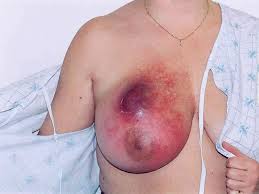What is Menopause?
Menopause is the end of menstruation/ periods & menopausal syndrome is symptoms associated with the physiological changes that take place in the body as the period of fertility ends.
- It is a normal consequence of the aging process and a hormone-deficient state that occurs at the age of 45-55 years.
- Women are usually considered to be menopausal if she has not had a menstrual period for one year without any underlying cause.
- It is an inevitable phenomenon in a women's life and many years are spent in the postmenopausal phase. This may last 2 to 5 years or sometimes longer.
What causes menopause?
Some women experience mild problems or none at all but some women have severe symptoms in this period. Common symptoms include the following
Irregular periods with scanty or excessive bleeding
- Hot flushes or a sensation of heat
- Night sweats
- Vaginal dryness and itching
- Mood swings
- Joint pain
- Edema
- Sleeplessness
- lassitude
- Excessive hair fall
- Anemia
- Weakness
- Stress incontinence
- Loss of sexual desire
- Wrinkling of skin etc
How are they treated?
It is a natural phenomenon and does not need any treatment. Some women may seek treatment if it starts affecting the quality of their lives. A few options are:
- Hormone Replacement Therapy (HRT): It replaces the estrogen and progesterone in the body through a simple patch on the skin and oral medication given by the doctor. Highly effective.
- Medicines: Serotonin based medicines may be given to combat hot flashes. For vaginal dryness, vaginal estrogen in the form of cream or gel may be suggested. It is best to seek advice from the doctor.
- Cognitive behavior therapy: A type of talking therapy that can help with low mood and anxiety
- Healthy & balanced diet and regular exercise: maintaining a healthy weight and staying fit and strong can improve some menopausal symptoms
What are the complications?
Menopause may lead to a few complications:
- Osteoporosis: Women start losing bone density in the first few years of menopause. This occurs due to reduced levels of estrogen that cause increased loss of calcium from bone tissue & can lead to osteoporosis.
- Breast cancer: The risks of breast cancer increase with menopause. Exercise and regular scanning can help you reduce the risk.
- Urinary incontinence: Menopause causes the tissues of the vagina and urethra to lose their elasticity, resulting in frequent, sudden, and overwhelming urges to urinate.
- Cardiovascular diseases: Drop in estrogen levels increases the risk of getting cardiovascular diseases.
- Weight gain: Due to slow metabolism. Eat less and exercise more, just to maintain the current weight.
Investigations to be done at menopause:
- Haemogram/CBC
- Pap smear
- Serum FSH levels
- Serum estradiol levels
- Serum L.H. levels
- Ultrasound abdomen
- Bone mineral densitometry
- Mammogram
What should be done?
Accept that the menopause is a natural fact of life and nothing to be embarrassed or worried about. Discuss any unpleasant problems with an understanding friend or your doctor. It is important to lead a healthy life:
- Quit smoking or using tobacco products, if you currently do.
- Eat a healthy diet, low in fat, high in fiber, with plenty of fruits, vegetables, and whole-grain foods.
- Make sure you get enough calcium and vitamin D.
- Learn what your healthy weight is, and try to stay there.
- Do weight-bearing exercises, such as climbing stairs or dancing, at least 3 days each week for healthy bones.
- Practice yoga and meditation for stress management
- Check cholesterol levels periodically
- Limit tea/coffee consumption
- Avoid a sedentary lifestyle
- Cleanliness of genital organs should be maintained,
- It is normal and healthy to continue sexual relations, but a vaginal lubricant such as K-Y gel may be necessary
- Contraception is advisable for 12 months after the last period.
When to meet your doctor?
- If you have a return of unusual bleeding.
- Heavy bleeding is not responding to medication
- Menopausal syndrome associated with fracture
- Menopausal syndrome associated with other serious systemic illness
References :
- John M. Murtaghs Patient Education. of 6th revised ed edition. North Ryde NSW: McGraw-Hill Australia. 2012
- https://www.nhp.gov.in/menopausal-syndrome_mtl
- https://happyaging.in/menopause-overview-symptoms-and-treatment/
- https://www.mayoclinic.org/diseases-conditions/menopause/symptoms-causes/syc-20353397#:~:text=Menopause%20is%20the%20time%20that,is%20a%20natural%20biological%20process.
- https://www.nhs.uk/conditions/menopause/
- https://www.nia.nih.gov/health/infographics/menopause-tips-healthy-transition photo credit
- https://www.verywellhealth.com/is-this-perimenopause-3522477 photo credit
- https://www.sepalika.com/menopause/the-complete-list-of-menopause-symptoms-all-35-of-them/ photo credit
- https://www.nia.nih.gov/health/infographics/menopause-tips-healthy-transition photo credit













